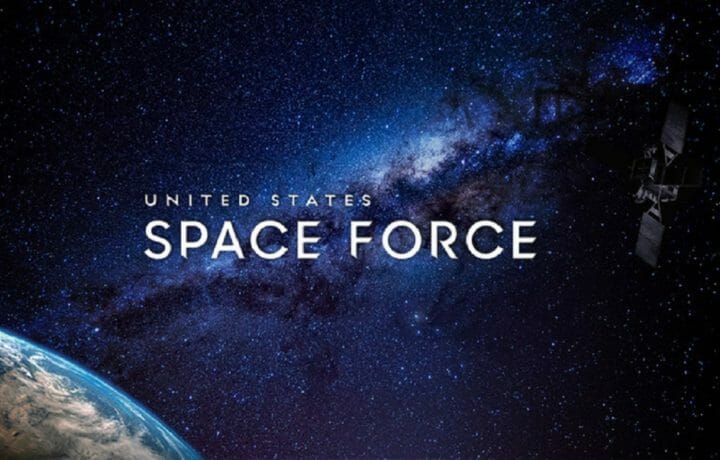On December 21, 2019, President Donald Trump signed into law the 2020 National Defense Authorization Act. This act officially established the U.S. Space Force (USSF). Joining Trump at the signing which took place at Joint Base Andrews was General John Raymond who is appointed as the first Chief of Space Operations. There are so many interesting details, here is a list that is sure to peak your interest if you are a space enthusiast, and having you shaking your head if you aren’t.
Why a Space Force?
This isn’t the military’s first foray into space. In 1985, the US Space Command (USSPACECOM) was born as a combatant command responsible for the command and control of U.S. Military space operations. The USSPACECOM is separate from the newly created U.S. Space Force, and according to their website, “The USSPACECOM mission is to deter aggression and conflict, defend U.S. and allied freedom of action, deliver space combat power for the Joint/Combined force, and develop joint warfighters to advance U.S. and allied interests in, from, and through the space domain.” USSPACECOM was most recently decommissioned in 2002 and then reactivated in August of 2019 in anticipation of the new USSF.
The USSF is meant to be an actual combatant force comprised of both military and civilian workers. The USSF is part of USSPACECOM which both fall under the oversight of the US Air Force (USAF). Here is a direct quote from the USSF’s website on what their mission entails, “The USSF is a military service that organizes, trains, and equips space forces in order to protect U.S. and allied interests in space and to provide space capabilities to the joint force. USSF responsibilities include developing military space professionals, acquiring military space systems, maturing the military doctrine for space power, and organizing space forces to present to our Combatant Commands.” The formal organization of the U.S. Space Force has now defined space as the newest theater of war.
Who Makes up the Space Force?
The USSF is comprised of both U.S. military members and civilians. The USSF is a part of the USAF much like the Marines are a part of the US Navy. Led by General Raymond, the first Chief of Space Operations (CSO), the initial USSF will consist of 16,000 members, most of which are currently serving under the USSPACECOM. Much like the other branches of the military, the CSO will have a seat in the Joint Chiefs of Staff at the Pentagon and function as a full military branch.
A Special Uniform?
According to the Department of Defense, the newly formed USSF will get their own military uniform and logo in the tradition of the other military branches. For now, the USSF members will be called Airmen, however that could change as well. Will we see a cool looking spacey uniform? Will it be made of aluminum foil or will it be similar to what we see military members wearing today. There is so much speculation, and more information will likely get released as Gen. Raymond gets settled into his post at the Pentagon.
Renaming Air Force Bases?
Being that the USSF is part of the USAF, there is a rumor that some of the Air Force bases today may get renamed to reflect the USSF mission. Vandenberg Air Force Base in California has long been the home to the 14th Air Force, however it will now be known as the Space Operations Command or SPOC (seriously??). Other bases rumored to be changing names are Patrick Air Force Base in Florida which may become Patrick Space Base. Along with Patrick, bases such as Peterson AFB, Schriever AFB and the Army’s Redstone Arsenal may also get a name change.
Is this necessary?
Do we really need to designate an entirely new military branch akin to the Navy or Army, for the purposes of securing the battlefield(s) of space? I don’t know. However, the military and the intelligence community generally have a better grasp on threats to our country than we as civilians do. As a former U.S. Air Force enlisted member, I will err on the side of trusting my country’s record of defending against terrorists both foreign and domestic since 9/11. But I don’t know if I will get used to changing that statement to “foreign, domestic and alien.”



